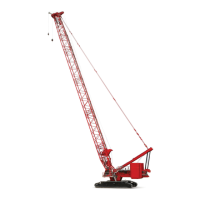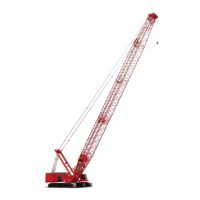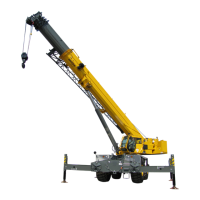Manitowoc Published 04-06-18, Control # 231-14 3-3
MLC650 VPC-MAX™ OPERATOR MANUAL OPERATING CONTROLS AND PROCEDURES
OPERATING CONTROLS AND
PROCEDURES
See Section 3 of the MLC650 crane Operator Manual.
OPERATING PRECAUTIONS
• Read and comply with the instructions in the Crane
Operator Manual and in the VPC-MAX Capacity Charts
before operating crane. Do not operate beyond limits
given.
• If equipped with a luffing jib, also read the instructions in
the Luffing Jib Operator Manual and in the Luffing Jib
Capacity Charts. Do not operate beyond limits given.
• Make sure the proper counterweight is installed.
• Read and become thoroughly familiar with the
instructions in the Main Display Operation Manual.
• Read and become thoroughly familiar with the
instructions in the RCL/RCI Operation Manual.
• Make sure the RCL/RCI is properly configured as
instructed under the topic Entering Boom Configuration
in the RCL/RCI Operation Manual.
• Read and comply with the instructions in the VPC-MAX
Maximum Allowable Travel Specifications Chart. The
chart contains counterweight requirements for travel and
swing without load.
• Make sure load sensing pins are operating properly.
Otherwise, the counterweight assembly will not extend
and retract automatically when required.
• Make sure the VPC-MAX limit switches are adjusted and
operating properly. Otherwise, the counterweight
assembly will not extend and retract automatically when
required.
• Adhere to the boom raising and lowering limitations
given in the Capacity Charts. Block the crawlers if
Item Description
1 HOIST—With forearm vertical, forefinger pointing up, move hand in small horizontal circles.
2LOWER—With arm extended downward, forefinger pointing down, move hand in small horizontal circles.
3 USE MAIN HOIST—Tap fist on head. Then use regular signals.
4USE WHIPLINE (Auxiliary Hoist)—Tap elbow with one hand. Then use regular signals.
5 RAISE BOOM—Arm extended, fingers closed, thumb pointing upward.
6 LOWER BOOM—Arm extended, fingers closed, thumb pointing downward.
7
MOVE SLOWLY—Use one hand to give any motion signal and place other hand motionless in front of hand
giving the motion signal (hoist slowly shown as an example).
8
RAISE BOOM & LOWER LOAD—With arm extended, thumb pointing up, flex fingers in and out as long as
load movement is desired.
9
LOWER BOOM & RAISE LOAD—With arm extended, thumb pointing down, flex fingers in and out as long as
load movement is desired.
10 SWING—Arm extended, point with finger in direction of swing of boom.
11 STOP—Arm extended, palm down, move arm back and forth horizontally.
12 EMERGENCY STOP—Both arms extended, palms down, move arms back and forth horizontally.
13 TRAVEL—Arm extended forward, hand open and slightly raised, make pushing motion in direction of travel.
14 DOG EVERYTHING—Clasp hands in front of body.
15
TRAVEL (Both Tracks)—Use both fists in front of body, making a circular motion about each other, indicating
direction of travel forward or backward. (For Land Cranes Only).
16
TRAVEL (One Track)—Lock the track on side indicated by raised fist. Travel opposite track in direction
indicated by circular motion of other fist, rotated vertically in front of body. (For Land Cranes Only).
17 EXTEND BOOM (Telescoping Booms)—Both fists in front of body with thumbs pointing outward.
18 RETRACT BOOM (Telescoping Boom)—Both fists in front of body with thumbs pointing toward each other.
19 EXTEND BOOM (Telescoping Boom)—One Hand Signal. One fist in front of chest with thumb tapping chest.
20
RETRACT BOOM (Telescoping Boom)—One hand signal. One fist in front of chest, thumb pointing outward
and heel of fist tapping chest.
WARNING
Observe the following operating precautions to prevent
tipping or structural failure of the attachment.
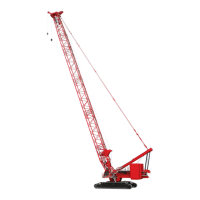
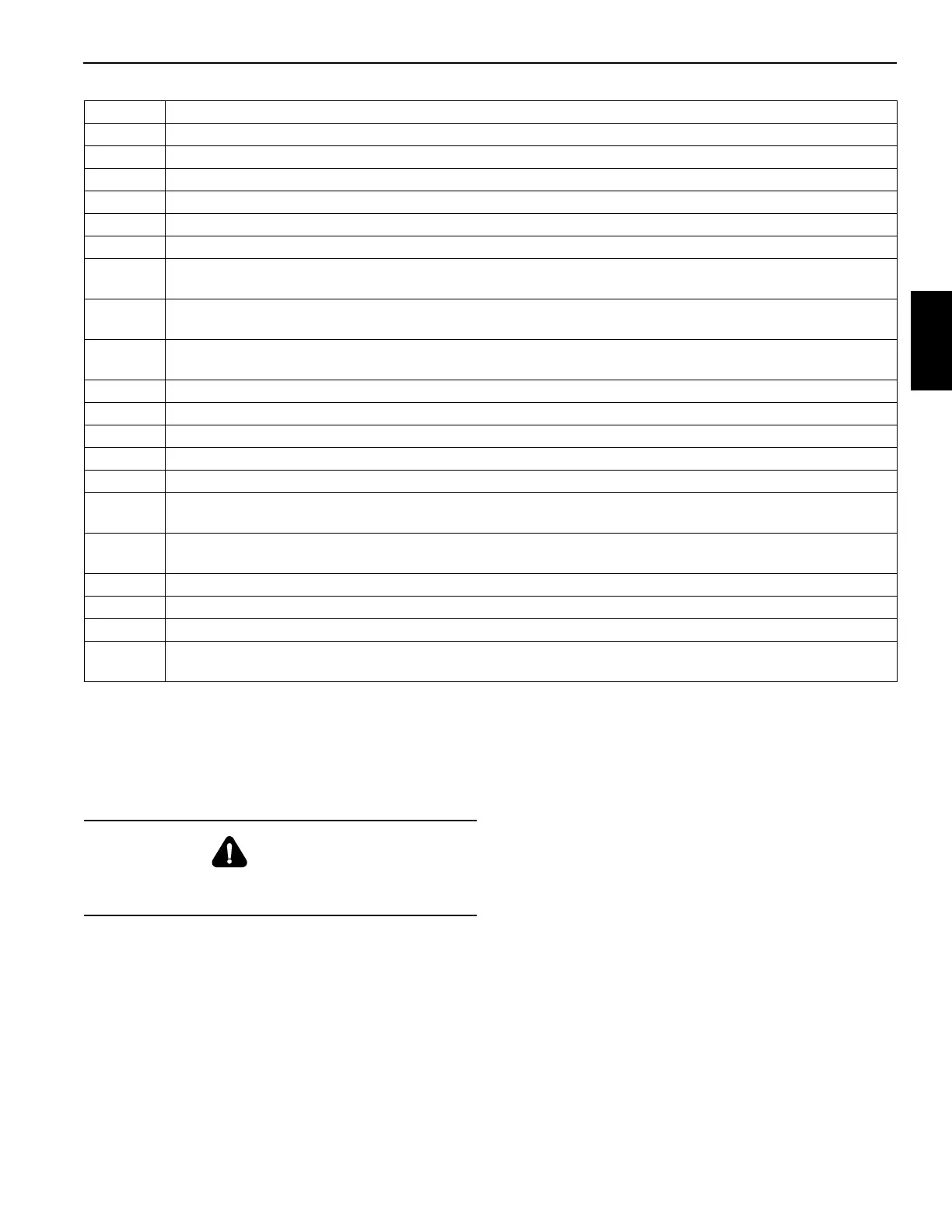